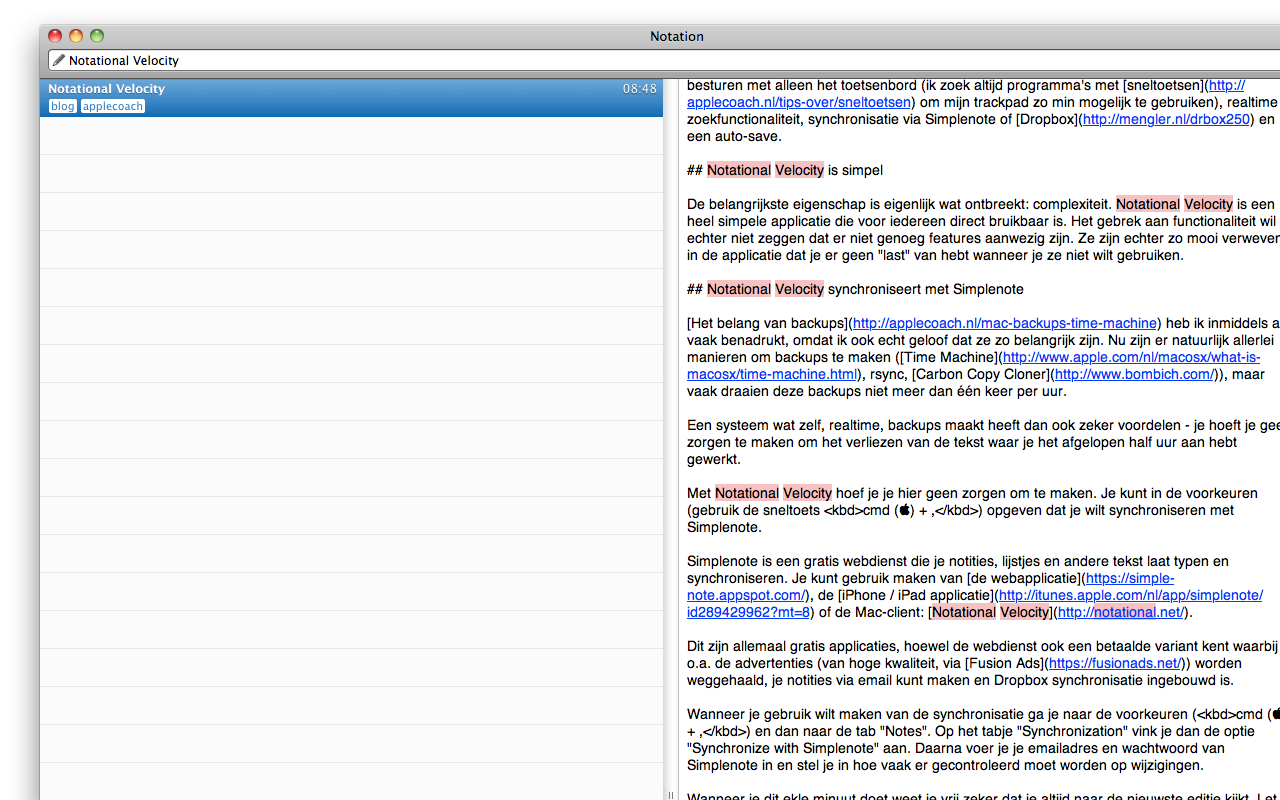
- #Mac allow notational velocity to run software#
- #Mac allow notational velocity to run free#
- #Mac allow notational velocity to run windows#
This isn’t a problem for me, but might be for some. Whilst nValt saved all data locally, either to a database or individual files, QOwnNotes only saves files to individual text files. Ideal! The view is easily able to be customised to be able to display various items which is above and beyond what could be done in nValt.
#Mac allow notational velocity to run software#
However, the latest version of the software (in the few months I’ve been using it, updates have been fairly often) allows the user to make a choice about how it’s viewed to start with - either full, minimal or single column, with single column being essentially the nValt layout, with toolbar. The screenshot shows the QOwnnote window with the Dark Materials theme applied (found within the settings) and with the font changed to Mono Dyslexic 2.

It has the notes list on the left hand side of the screen and then the main note body to the right. Opening up the program to start with, it was similar to nValt, but perhaps not quite as simple as I might like it.
#Mac allow notational velocity to run free#
Free and open source, which was a good sign, I downloaded it in the hope if would be the text editor I was looking for. So during my browsing on Alternativeto, I managed to come across QOwnNotes that seemed to promise the nValt experience I was after. There’s also nvPy which is a Python implementation of nValt, but again this syncs with Simplenote and I really don’t need this feature, I just want the files saved locally where I want to save them. There’s Resophnotes for example, however, this syncs using Simplenote and doesn’t save files locally as Markdown files (but that’s perhaps me being picky). I’ve occasionally tried to find different editors that will do the job of nValt. Overall, I’ve been able to write blog posts as and when I’ve needed to and I’ve been able to use it fairly successfully, but it’s never been as straight forward and easy to use as nValt, which is a shame. Basically this recommends a few plugins, such as Advanced New File (and a few other search ones, but I’ve basically not installed these on my recent version and I’ve noticed no difference). I’ve installed a few Sublime plugins to try and help replicate nValt slightly, using the article I found here.

In general, this has worked reasonably well.
#Mac allow notational velocity to run windows#
On Windows and Linux, this has usually been by using Sublime Text or Atom 1. However, jsut for notes and short notes (or even longer items), I continued to use plain text. Since then however, I’ve discovered Zim Wiki and I use that for storing my data that where I may need images, as at the end of the day, it saves data as a text file still, so I’ll be able to access it at a later date wherever. It worked well and I preferred it to Evernote. I used that (rather than Notational Velocity) for a number of years for storing notes and stored everything in it from blog posts, to research notes and paper reviews. One of the few programs I really miss from macOS is nValt.


 0 kommentar(er)
0 kommentar(er)
